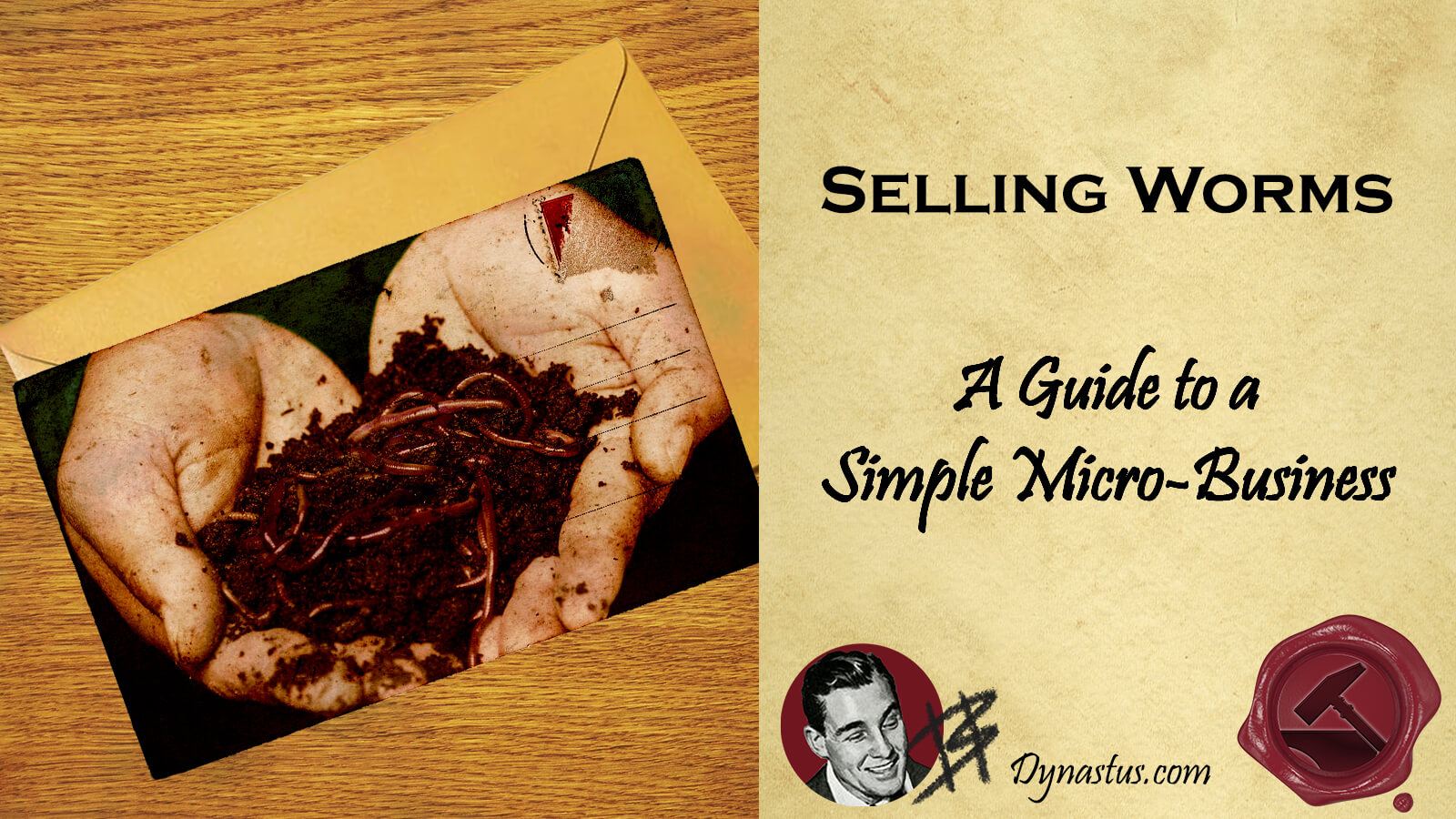
Disclaimer: I am not a financial advisor and this page exists to aid you in your research, but not make or suggest decisions for you. Further research is recommended for you to draw a conclusion of your own. Additionally some links contained on this page may be affiliate links in which Dynastus will receive a portion of sales at no additional expense to you.
Great Starter Resource (clickable)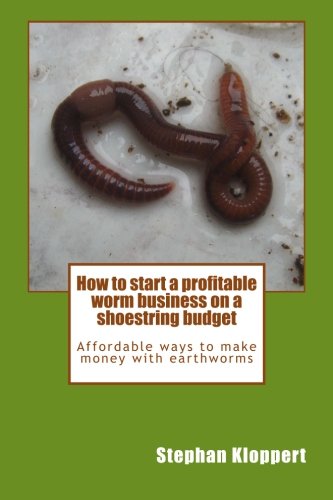 How to Start a Profitable Worm Business
How to Start a Profitable Worm Business
Selling worms can be a great micro-business, especially when starting out on your financial journey (or looking to add additional revenue streams to bolster you family coffers).
Worms are in high demand, cheap to set up and teach the basics of setting up a business with a lot of leniency. When I was an apprentice electrician looking to make a little on the side, I set up a few worm powered revenue machines. I did this through a process called “Worm Farming”, or more formally “Vermiposting”.
Worms take up very little room, are really quiet and create 3 different products from free waste materials in which you can sell, offering a diverse income. This isn’t to mention the startup costs can be absolutely free! Selling worms can be a great way to get a head-start on taking control of your finances.
Worms are an integral part of nearly any ecosystem. Not only do they aid in aerating the soil and provide food for birds, they also break down organic matter. This organic matter includes things like leaves, food scraps, and animal waste. Basically, they take the leftovers that nothing wants and turn it into useful materials, making waste products bioavailable for plants. We are able to exploit this fact to build a business around turning free waste into sellable products(not just selling worms themselves).
Ask any serious gardener and they’ll tell you they can’t get enough worm castings or worm tea. Selling worms, worm tea or worm castings can bring in extra income while filling a niche in your local community. Read on to learn how to build this side hustle into a profitable income stream.
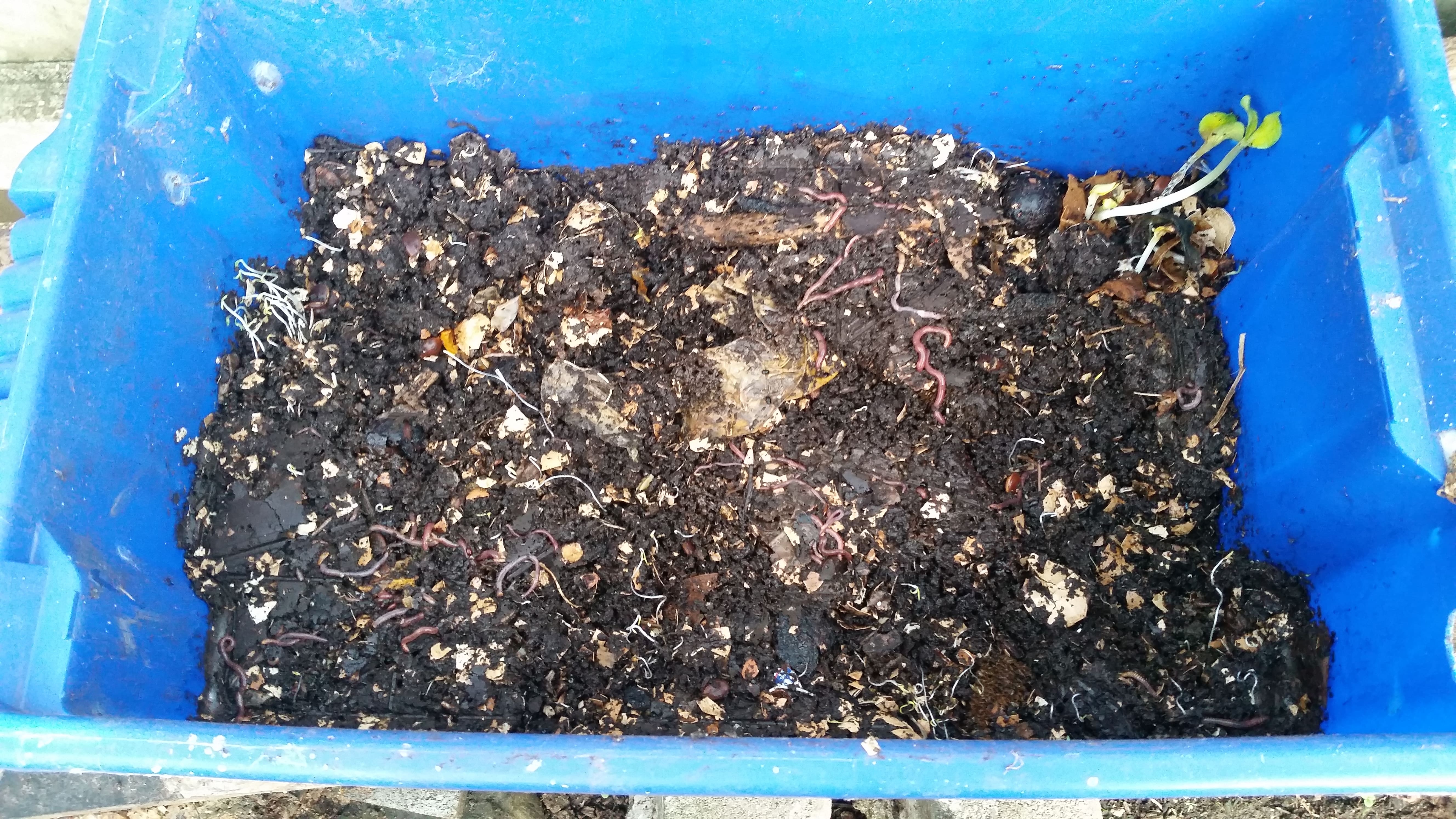
Beautiful ‘Black Gold’…with some impurities.
Why worms?
Worms produce 3 things:
- Worm Castings: a form of black, rich compost.
- Worm Tea: a liquid by-product from the decomposition process that enriches soil as a liquid fertilizer
- More worms: which can be sold to fishing stores/local fishermen, gardeners, fish keepers/pet stores and other worm farm starters.
All of these things are highly prized by those who seek them. Selling worms is one thing, but gardeners looking for bigger crops love to buy castings by the bag-full. And they can go for a lot. Worm tea adds microbial life to the soil, enriches it with trace minerals and key nutrients and laces it with worm eggs, which help distribute organic matter and aerate the soil. Fishing enthusiasts are always after the fattest, juiciest worms to catch the largest fish. Likewise, aquarists love to purchase worms of all sizes to feed to their freshwater tank fish for a protein boost.
If you have chickens, worms can provide a great source of additional protein, which in turn produce protein-rich eggs for human consumption. I guess you could cut out the middle-hen and eat the worms yourself…but I wouldn’t advise it.
The point is, all of these products can be sold or used. With their low set up cost and ease of running, anybody can turn a profit as a worm farmer, how much you make is all up to you.
Getting Started
This Stuff is Expensive! (clickable)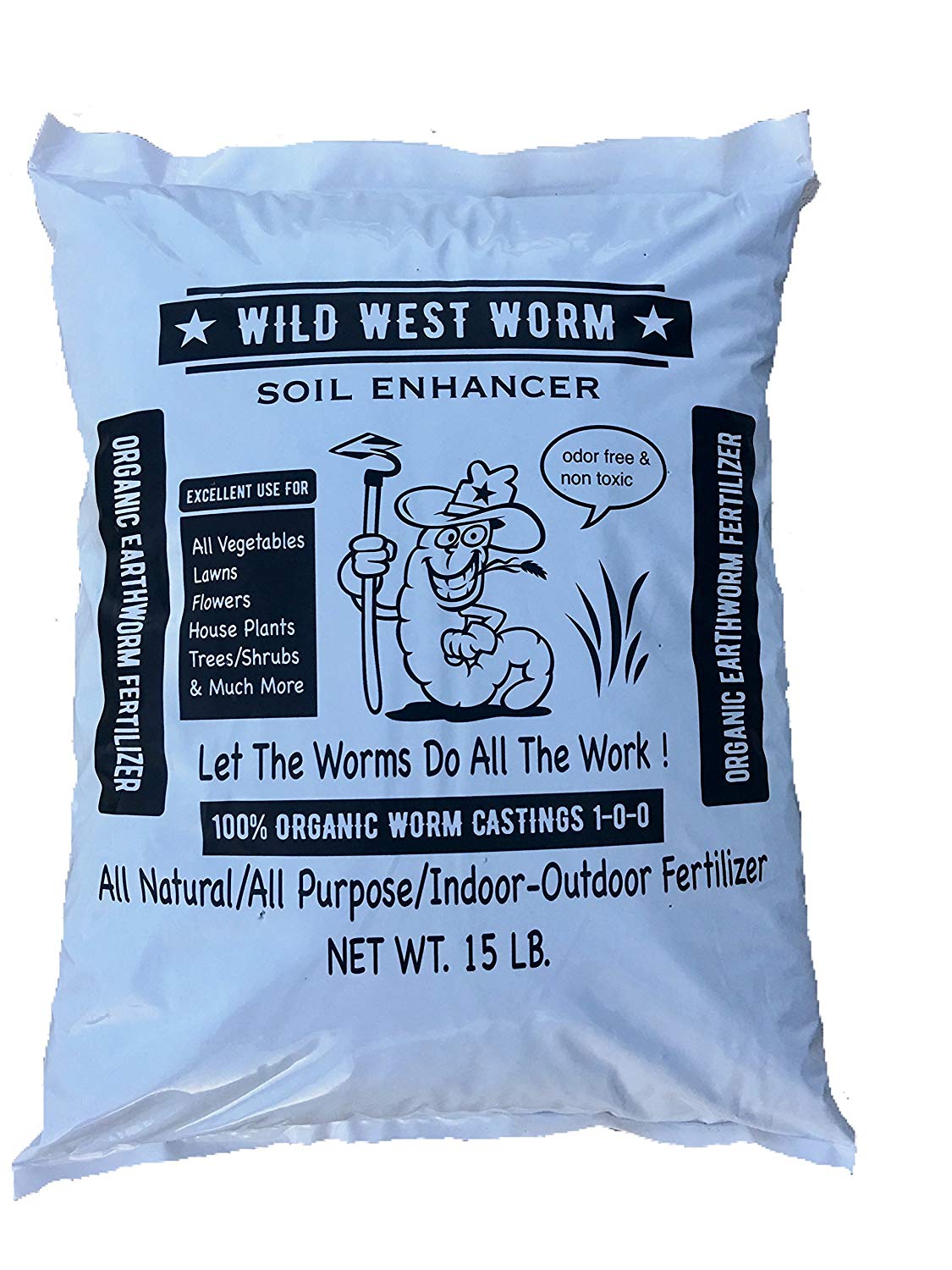 Wild West Worm Castings
Wild West Worm Castings
A worm farm costs very little to set up. You only really need 3 things:
- A Container(affectionately referred to as a “Worm Farm”)
- Worms
- Worm Food(aka nearly any organic waste material)
The most basic system is basically a container with small drainage holes, with a few worms and some material for them to consume. If you want to get more advanced, you can use a stacking system, and rotate the containers as they fill up. You can even add a catchment tray to the bottom and collect a liquid worm tea, a by-product from the decomposition process.
Setting up a worm farm can be a creative and absolutely free endeavor, utilizing scrap materials and waste products. Contrarily you can spend as much as you like setting up the fanciest of farms Or opt to purchase a more affordable, but equally functional farm. It’s really up to you. You can always start small and scale up over time, which is always an awesome thing to do. After the great bathtub heist(a story for another time), I had two scavenged bathtubs on wooden frames full of worms going, hah. This is before I was qualified and before I did massive hours. The added income from the worm farms covered my weekly gas and left a little to put into the mortgage on my rental property.
The Worm Farm
A worm farm is where the ‘domesticated worms’ will live – the nexus of selling worms and their byproducts. If you’re starting on a budget, you can start with any old ordinary container. Worms population will typically regulate in relation to the amount of space and food available. So the bigger the containers, and the greater quantity of food you provide them, the faster they’ll multiply.
Buying
As with most things, you can throw money at a project and near guarantee a great, high-quality outcome (this is sarcasm!).
The more you spend on your wormfarms though, the higher the chance you will be selling worms sooner. But it will impact your ROI. There is a ton of commercially available worm farms, and most work great for all intents and purposes.
If you aren’t budget constrained and want worms for your personal use, then this could be a better option. If you don’t have any tools or want something pleasing to the eye, then a pre-packaged farm will be the better bet.
Building
Great Mid Range Worm Farm Here (clickable)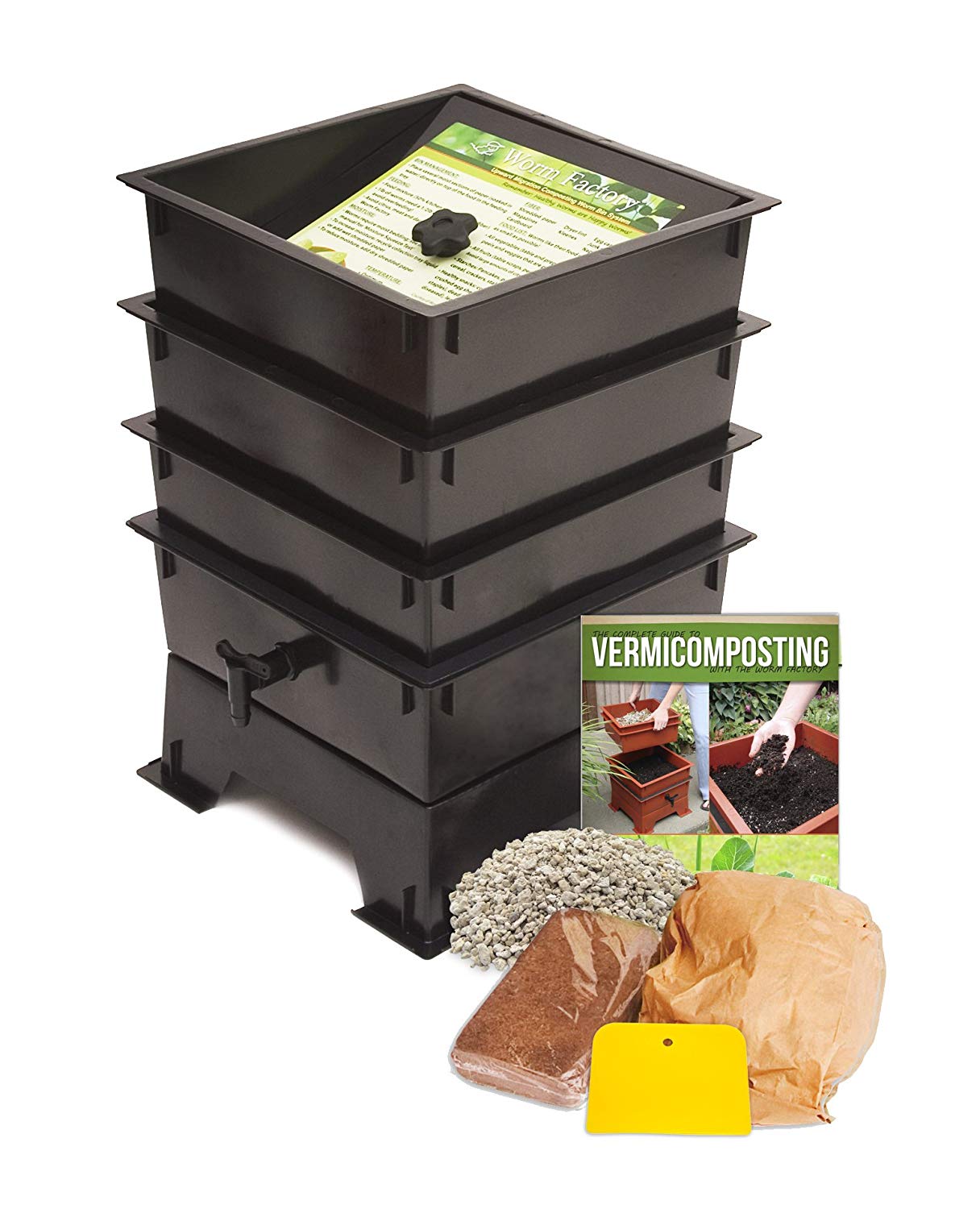 Nature’s Footprint Worm Factory
Nature’s Footprint Worm Factory
If you have a few simple tools and some basic idea of how to use them building a worm farm is definitely an option. For the ROI on selling worms, being creative and building your own with minimal costs is going to give you the best return. For our current worm farms, I opted to build my own.
I didn’t document this when I made them, regrettably, so I’ll do my best to describe how I made ours. A quick google search will offer many a design. Now, I wanted some decent volume, so I went to our local hardware store and purchased fish bins(plastic containers) with a 60L volume a pop. I drilled large, 32mm(1 and a 1/4 inch) holes in the bottom of each container. These now sit on top of each other, with the newest food scraps going into the top containers.
The worms devour all the food in the bottom container, then move up to the higher levels to devour the new food. We take away the bottom container and put the castings in the garden. Then we put the now empty container back on top.
We could add a lid with small holes drilled in it and another container to the bottom with no holes and use this to catch the worm tea, but we opted not to do this, though in saying that it’s definitely in consideration.
Being budget conscious, I made a lid from scrap wood we had. Simple but effective. This stops rodents and birds rummaging through…most of the time.
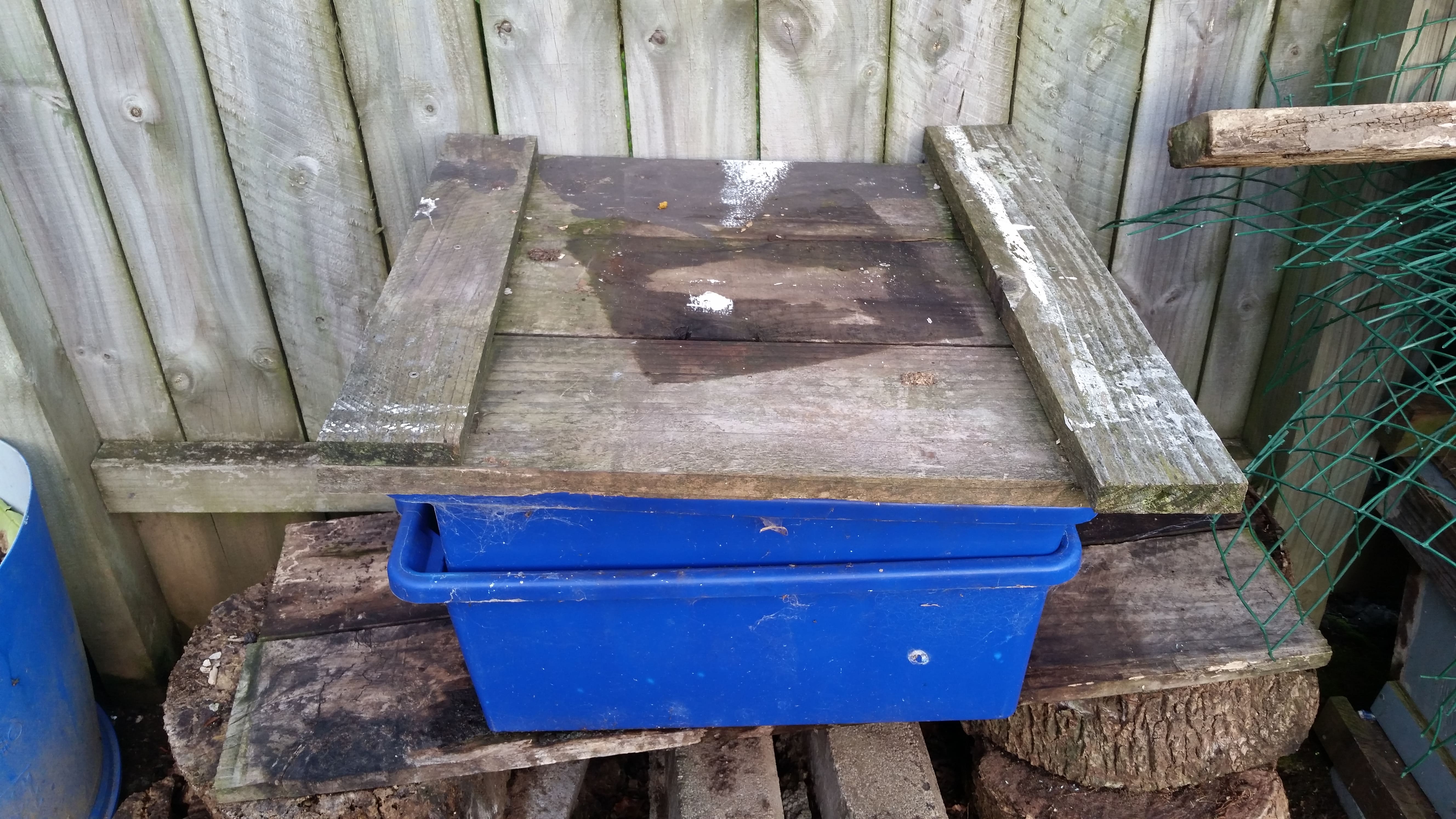
The Stacked Containers and My “Lid”
We had 3 different farms going at one point but found it best to consolidate them into one stack for the time being.
There is a huge number of designs you can build, you can always check Instructables for design ideas. Whatever you build, as long as it limits the worms escaping, it will usually suffice. Even a bathtub makes a great worm rearing set up.
Basic(budget constrained)
You can opt for a much simpler option when starting out, rolling your first profits into upgrading your set up. All you really need it a container with some drainage. A simple plastic container will do just fine. Larger than 5 L preferably, and wider than it is high is preferable.
If you’re really on your bones, a cardboard box can serve as a temporary solution to start off your worm farm. Though if things are this bad, you’ll probably want to be selling the worms you scavenge before attempting to breed them. Selling just 1000 worms will give you enough to set up a decent and reliable worm farm.
If you’re really this dire of a situation, come and join The Dynasty Foundry and somebody is sure to be able to help with some guidance (if not myself).
The Worms
Not just any earthworms will do. There are actually 3 main types of earthworms, the earth-worker, the root dweller and the composter. For our purposes, we’ll be focusing on the composter. These worms come in a few breeds that will vary depending on your location, the most common(and what I have always had) is the Tiger worm. There are also Blue Noses, Red Worms or Red Tiger Worms.
The variety you’ll want to aim for if you can is the red worm. They’re hardy, efficient, reproduce quickly and prefer a composting environment. Sometimes, sticking to what is local is a better bet, especially if you’re targeting the fishing market. Local fish are most likely going to prefer local worms.
You can get composting worms from a variety of places. You can ask a fellow gardener in your community for some(or for a trade, which is fairer). If you don’t know anybody who has worms, and you’re starting on a budget, you can hunt for them, or bait them.
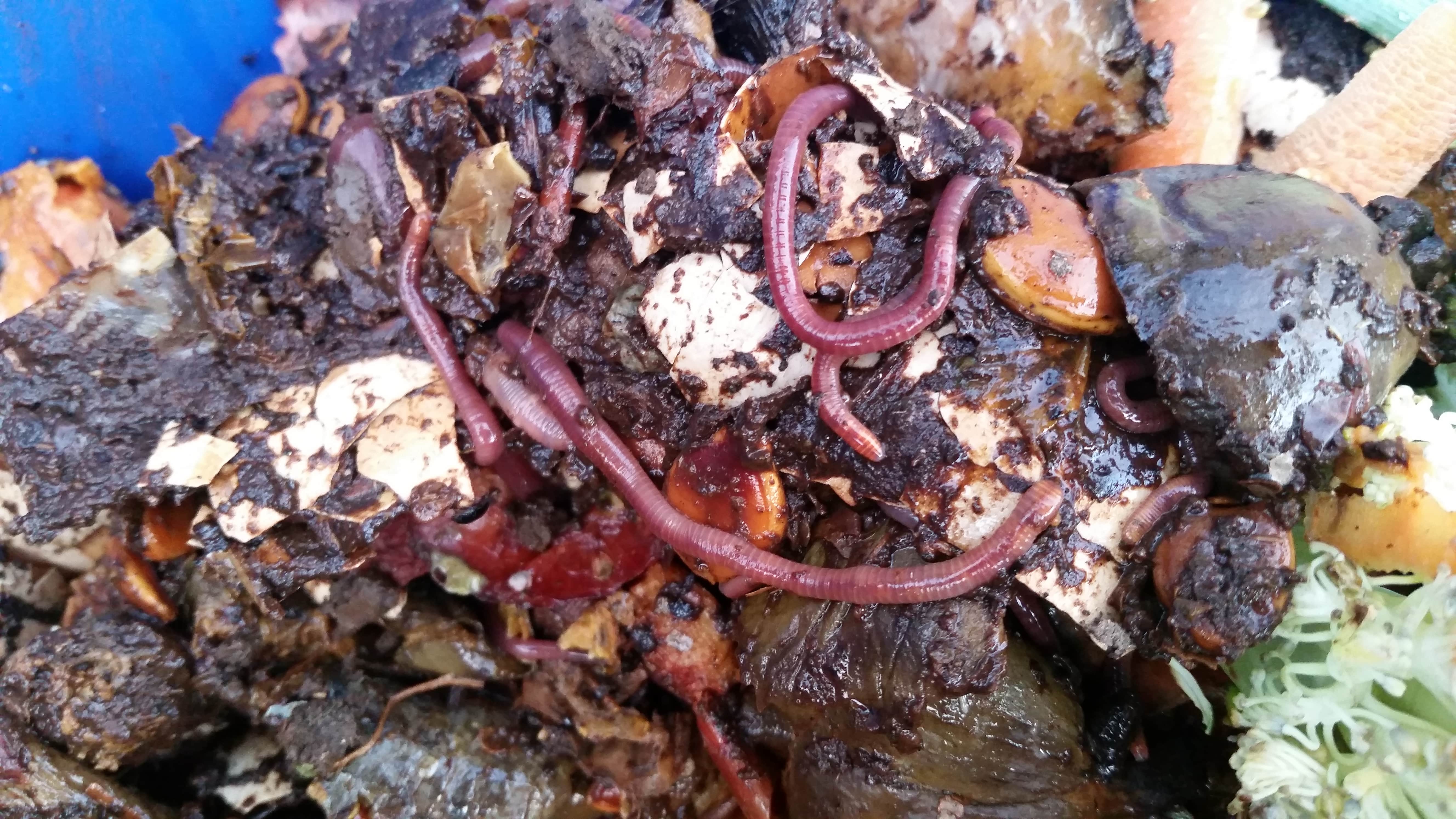
Some Worms in our Farm
Where to Find Worms
Worms are everywhere. You can buy them (from other people selling worms), hunt for them or bait them.
Where to Buy Worms
A Starter Set of 250 Worms (clickable)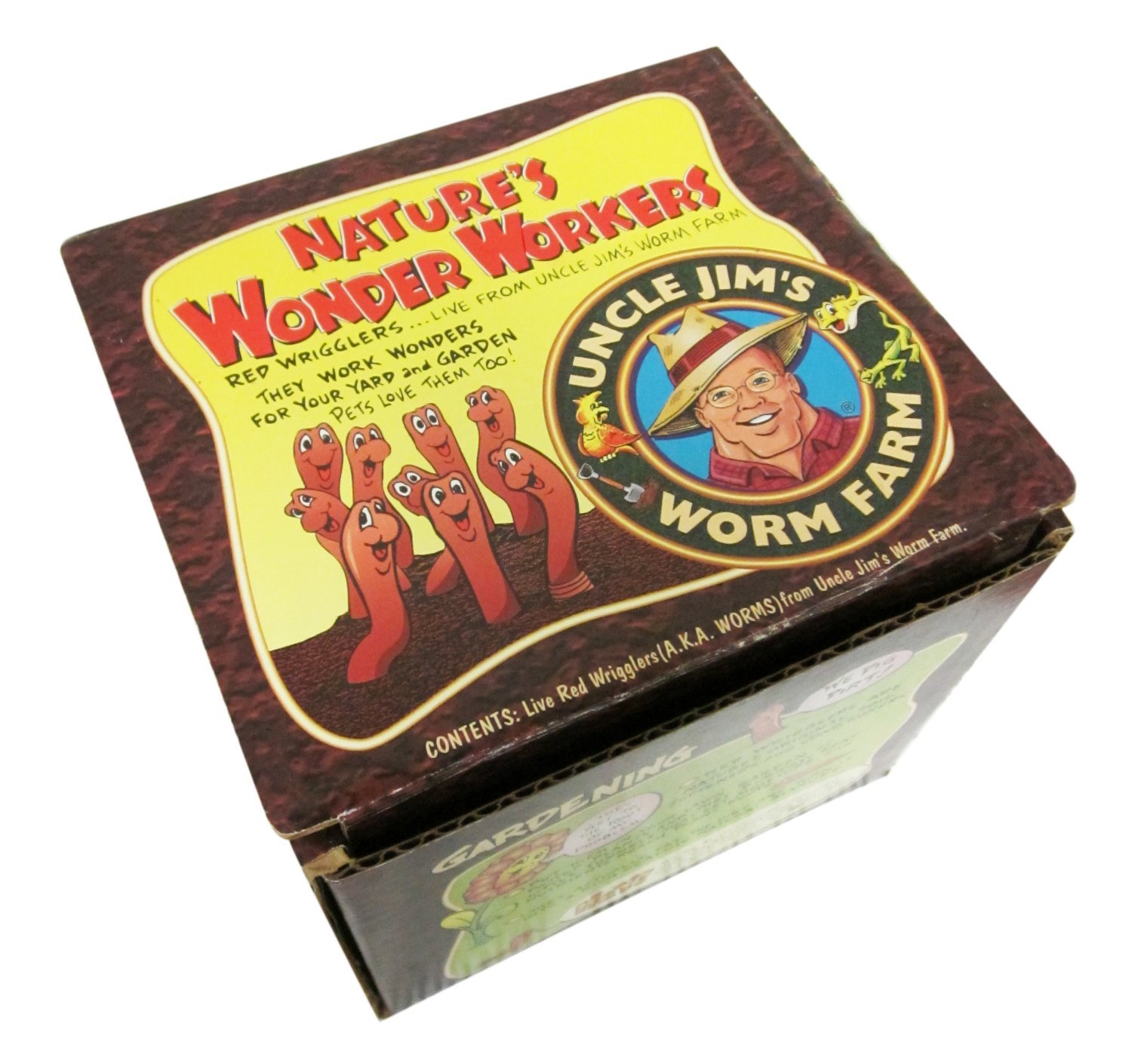 Uncle Jim’s 250 Worms
Uncle Jim’s 250 Worms
Buying is the obvious shortcut. If you aren’t terribly constrained by budget, then this can be a good way to get a head start with a relative guarantee. As worm’s double in number every 3 months, you will make your money back selling worms in a quarter of a year. You can find worms for sale on Amazon(of all places). There is a surprising number of listings, so I took the time to find what appears to be the best deal form a professional seller. You can check it out by following my affiliate link here.
Hunting For Worms
Worms tend to go deep into the ground in cold winters, so if you live somewhere it freezes over, you’ll be wanting to wait for the soil to thaw. Another thing of note for selling worms, is that if you live somewhere super cold, you’ll want to be doing this indoors. If and when it’s warm enough, you can hunt for worms under old logs, in the bottom of compost bins, under piles of leaves or anywhere there is decaying matter. We got our worms out of the bottom of our compost bin and from a gardening teacher from a class I took.
Baiting Worms
If you don’t have any of the above, you can set up a bait system to catch some worms. Start by getting some organic materials, lawn clippings, leaves, wood chips, horse poop, anything will do. As long as it’s made of green waste. Rotting meat, fatty waste or poop form an animal that eats meat will not work. Once you’ve got your green waste, pile it up, and mix with a bit of soil. If you can find some, a wood board or sheet of cardboard over the top will increase the number of worms that are attracted, and stop birds from getting to them before you. After 3-7 days, have a look through and you’ll find worms making their way through your bait! Pick them out, reset the trap and add the worms to your farm.
How many?
The more worms you start with, the better. Take note that the worms you put into the farm will be the seed genetics for all future generations in this isolated environment too. Providing a good starting pool of genetics will ensure you get a healthy and strong population. Over time, they’ll adapt to the conditions of the farm you provide too.
You’ll want to aim for 300-1000+ for a small starter farm. If you really want to get cranking, 10,000 is recommended. Worm populations double every 3 months, so you’ll be waiting about that long before you can start selling worms. If you want to make more money, you need more worms and the more you can start with, the faster they’ll compound.
Worms rely on calcium as one of the key elements to aid in their reproduction. Crushed eggshells will help them establish a population faster, you could also sprinkle some dolomite lime. Your call. Bakeries are a good source of eggshells, you can typically get them for free if you ask nicely.
Worm Food
Worms take the world’s waste, break it down and make it bioavailable for plants to consume. The basic rule is that if it isn’t meat or oily it should be ok. Animal waste is a great addition to a worm bin as long as it’s from a herbivorous animal. Make sure the animal isn’t omni/carnivorous though so this will be toxic, and will also attract flies and rank odors. Rabbit poop is the ultimate in worm food, if you can find a reliable source of it, you’re golden. Ironically rabbit poop is the best manure to use straight away on gardens, so there is a trade off to be had here.
Any table scraps you have in your house, like broccoli stems, outer cabbage leaves, leftover potatoes or pasta can go straight in the worm bin. This is true as well for garden waste. If you’re industrious and want to go ham bone on this project, ask your local grocers if you can delve into their green waste. Grocers are forever throwing out perfectly good worm food, which you can process and sell.
If you have the facility for it, whether you use a mulcher or lawn mower, or even a pair of secateurs the smaller you pieces fo worm food, the better. You don’t have to go crazy, but more surface area(aka small and more numerous) pieces makes it easier for worms and the other organisms in the farm to break the food down.
Coffee grounds are great to add is, as long as the volume isn’t overwhelming. Turns out worms like caffeine too and this will get them and the other organisms in the worm farm working overtime! If you don’t consume ground coffee, your local cafe may be willing to give some bags to you if you ask nicely. Lots of people are after this stuff though, so good luck!
The other great addition is eggshells or a light sprinkling of lime. Calcium helps worms reproduce, so ample amounts of it ensure there is enough at any given time to aid in the process. For my first farm, I got a load of eggshells from the local bakery, dried them, blended them into powder and sprinkled them on the farm. If you have your own chickens, all the better!
Essentially, all the waste you throw in here you are converting into some sort of product to be used or sold. As long as you don’t overload your farm, you will be selling worms in no time.
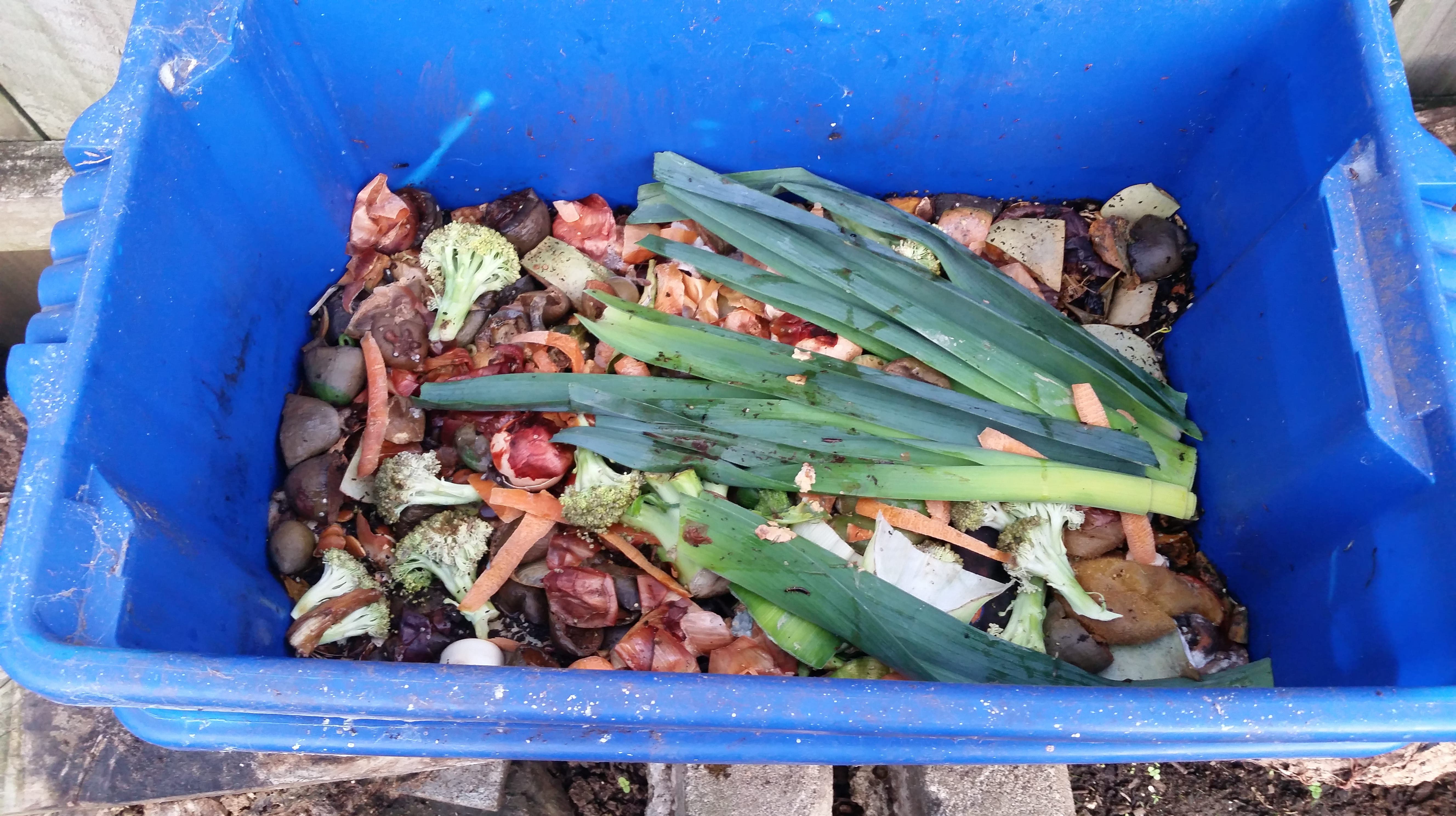
What Our Worms Are Eating Right Now.
Setting up a Worm Farm
Now you know or have gathered all the key constituents for a worm farm, it’s time to give them the best start possible before you can even be thinking of selling worms.
A worm farm is not a sterile environment, the worms need a little help to break down all the food you’re providing them. You’ll need to inoculate the worm farm with fungi, and bacteria. The absolute best place to get these microorganisms is from another successful worm bin. Barring this, you can add a bit of soil to the farm.
Give Your Revenue Machine a Tweak Up (clickable)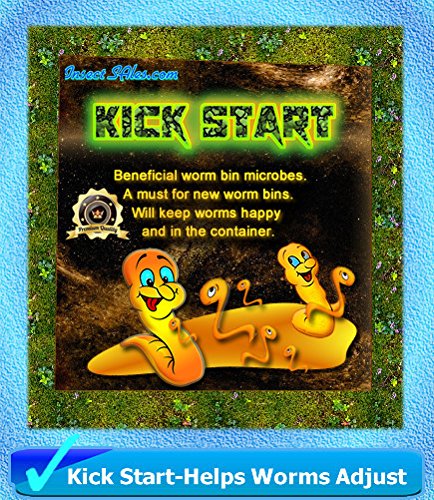 KICK START
KICK START
If you really want to get fancy, you can buy an inoculate product. This will give you the best possible start, for a small fee. If you can spare it, it’s highly recommended though. The one I’ve picked out is called “KICK START“, It actually comes with worms and worm eggs too, so you get huge value here. You can check out this product by following my affiliate link here.
To this soil or castings, add some shredded newspaper or cardboard along with some food for the worms and dampen the whole thing with some water. Tap is ok, but rain is ideal.
One the whole thing has soaked through and drained, it’s time to add the worms. Simply put them on top and cover-up. If your container lets any light in, it’ll help if you cover them with some cardboard or similar. Worms love the dark(obviously).
You’ll want to add food gradually, we usually sprinkle our kitchen and garden waste in once or twice a week. This prevents explosions in other insect populations and mold from spreading too rapidly and causing issues for the worms.
Selling Worms and Their Output
Now for the best part, where you start earning. Worms offer 3 distinct products. Worm Castings, Worm Tea and of course, more worms. If you’re creative enough, you could arguably sell ready-made worm farms too. But these aren’t really built by the worms, hah.
The market for farms suited to general households seem a bit saturated, but you could look at doing some larger scale farms like bathtub setups for your local market. The passivity of producing dense, high-value commodities, like castings, tea, and worms should be the main appeal to you. Selling worms themselves was what I made the most from, and will prove to be the highest margin product worms produce.
Selling Worms
With abundant resources and little to no predators, populations for any living thing thrive. Put ants in an ant farm, give them unlimited food and the population will continue to grow until you artificially have to put a stop on it. The same goes for worms. Their population is only limited by food, and space. Temperature plays a role too, too cold and they’re slow right down or die, and too hot the same will happen. But, if kept in a good temperature band, the population will continue to grow.
The general rule is, a worm farms population will double every 90 days. This doesn’t mean you’ll get a fully mature population. Worms actually reach adulthood in 12 months. So it’s best to wait around 6 months to a year after setting your farm up to reach a fully sustainable population that will continue to grow.
The way around this is to add more worms on a regular basis for 3-6 months. This will continue to add new adult worms to the farm that will balance out the adult and adolescent ones that are being sold. You don’t want to be selling worms that are your breeding stock.
To collect worms, you can add some fresh food to the top of the bin, softer food like banana peels will attract the most worms, simply peel away the food layer to find hundreds if not thousands of worms. Use plastic/rubber tongs to collect them to prevent a mass killing. Your hands work well too if you don’t mind a little hand-funk.
Packaging
To package the worms, you’ll need to provide some castings and some food for their journey. I always packaged mine in zip-lock or plastic bags. I used a rubber band tied around some tissue paper or cotton wool on the opening to allow air to get in without escape.
1000 worms can sell for 10-$20 dollars depending on your local market (I’ve seen them go for $40). If you’re washing and preparing them for fishermen, then you can often ask a lot more, especially if your worms are large and well fed.
Who Buys worms?
Well, – you – for starters…probably. You’re reading this, aren’t you? Still, you’d be surprised with the market for worms. For a sustainable customer, you want to be targeting people who are consuming worms with no intention of breeding them. These people include Fishermen, Aquarists(fish rearers), pond keepers. You can also try your hand at selling worms to aviarists(bird keepers) or people with chickens.
Short of this, other gardeners wanting to start their own worm farms are ripe candidates. Not everybody who buys worms will want to go on to sell them, so there will always be more gardeners/worm enthusiasts(?) to sell to.
Selling Worms Castings
This is the primary ‘product’ of worms. What exactly is meant by castings, you ask? Wellp..they’re worm poop. Yep. “Castings” is just a nice way of putting it. Even if it is poop, its valuable poop. The most valuable? Maybe. Apart from those coffee beans that viverrids poop out on some islands near Indonesia or where ever.
Worm castings contain a highly concentrated concoction of minerals and nutrients that plants love. Thus it’s a highly valued resource for gardening enthusiasts and non-conventional farmers alike. This stuff takes a long time to produce, hence it’s high value. If you want a sustainable business, then this is going to be the best path to a recurring revenue. Selling worms to other worm farm starters may eventually reach a point of saturation, not to mention others will be selling worms too. Castings are consumed, grant results and leave gardeners wanting more.
To get a real system going, you’re going to need scale. Multiple farms with a sustainable source of worm food is a must. Then a customer or 10 in which to sell them to.
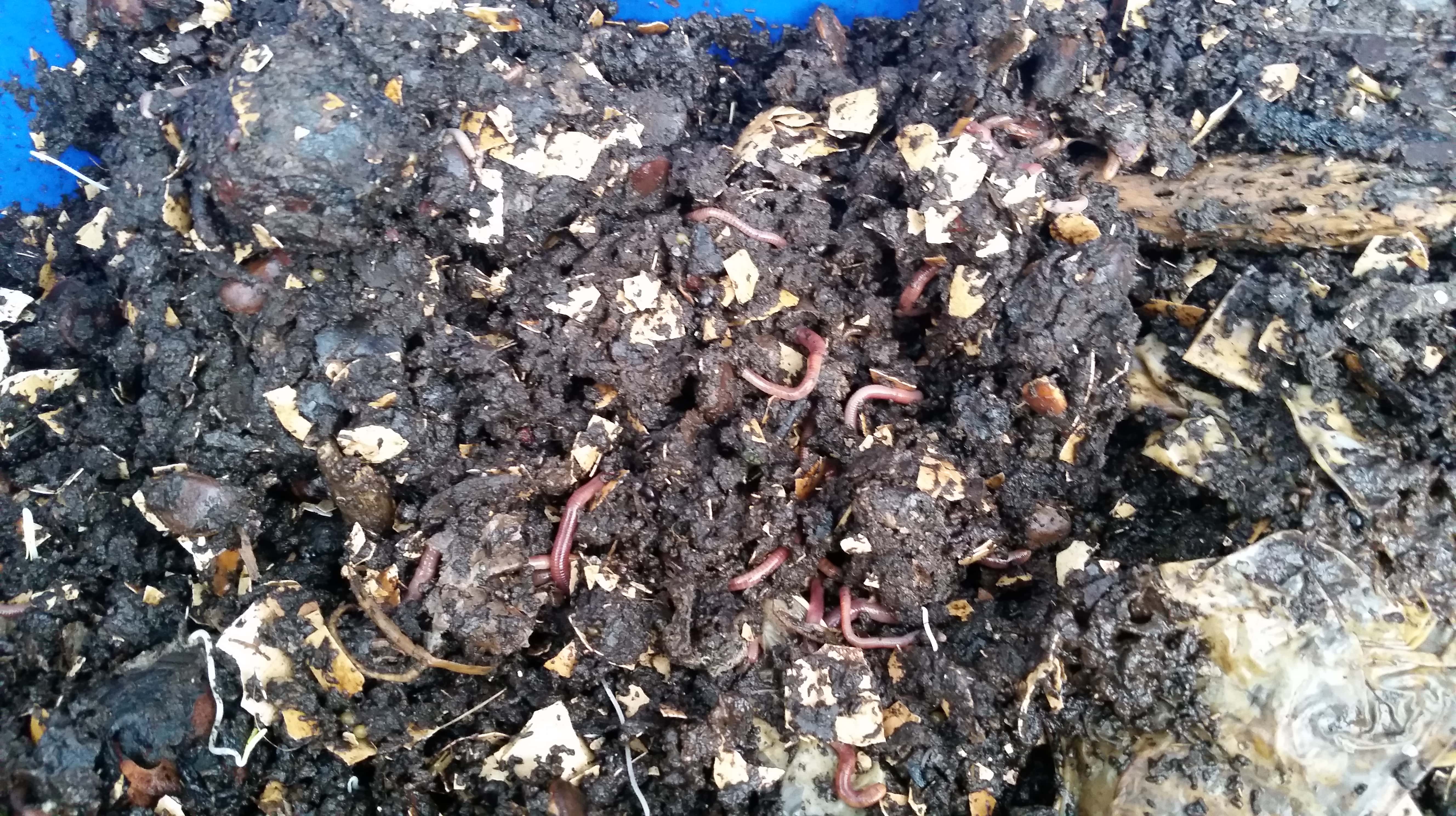
Castings. Delicious if you’re a plant.
Who to target
If you’re doing small bags with a small set up, you’ll have a hard time justifying the effort that goes in vs the profit you’ll be pulling when selling worms. Small quantities can be sold to locals on sites like craigslist or to a local gardener. A shopping bag is probably excusable for this kind of market.
If you’re going to build a real industry out of this, then you’ll want to find some bigger commercial clients. You’ll also be looking to get labeled bags(with your brand) and a sealer. You’ll also need a sifter, to filter out chunks of undigested food and worms(which you shouldn’t sell, but put back to work again).
The kinds of customers you’ll be targeting should be larger retailers that can sell your casting enmasse to the masses. Alternatively, you could find some hobby farmers or alternative farmers to sell to. Short of that, setting up some deals with the local gardening community, maybe through a gardening club would be beneficial. It really just depends on the scale and scope of your operation.
But ideally you want to be boot strapping your operation through selling worms, so start small, and scale up as your budget (and worms) allow.
Worm Tea
Worm Tea is a byproduct of worm poop. Its basically excess moisture laced with worm eggs and liquefied nutrients. The concoction is powerful stuff and can be a great soil fertilizer or sprayed onto foliage.
Fertilizer
If you’re watering soil using the tea, then add 9 parts water for every 1 part of tea. You can do weaker, but stronger will most likely be lost in the soil, or cause plants to get ‘top heavy’, ultimately killing them.
Foliar Spray
For a foliar spray, 20 water to 1 part tea is more appropriate, from my experience. This stuff clogs us spray bottles honestly so I have tended not to do this over the years.
The Problem
The problem with worm tea is packaging the stuff. The value of it is actually pretty low, and the potency can vary wildly. If you can come up with a way to bottle and test it economically, you have a good product on your hands. I personally just sold it to work colleagues at various factories I worked in, much to their delight. The price requested was a couple of dollars per bottle, but most gave me $5.
Anyway, unless you get creative or can sell directly, I’d advise using this stuff in your own garden. It’s heavy and invaluable. Shipping will be the clincher here, you’re better off just selling worms, in my opinion.
Quick Note on Products(in general)
When it comes to products you don’t want to be manufacturing demand as well – unless you’re a talented marketer.
Take it from me, I have had a very niche business in my portfolio that I had a hard time marketing. Not only did I have to convince people they want the product, I had to educate them on what it is and how to use it. THEN I had to convince them they wanted to buy mine – the highest quality(and most expensive) on the market. I ultimately sold this business to another entrepreneur with far more experience in this industry. Even with a massive brand backing him, he still struggled to sell the stuff and eventually shut it down. Mind you, this was in the food industry, not worms.
That said, find the most desirable thing in your market and focus on that. Manufacturing demand is a high-level skill. It is also highly costly in terms of marketing. You can build a business and skill set around creating demand further down the line if you really must, though I highly disparage trying to build demand. Find what your market wants, then cater to that. More on how to do this in another post.
When it comes to selling worms, there is a built-in demand so you don’t have to be too stressed there.
Growing Your Profit & Scaling Up
So if you’re all set up on a basic level, have garnered some experience, and want be selling worms to bring in some appreciable income for yourself or your family. You’re going to need to scale up.
It’s what you should be doing with any project you have success in, roll the profits back into the enterprise over and over to build a profitable and sustainable empire. You may start with just a container, then sell your first lot of worms and buy 2 more containers, then sell 3 lots of worms and buy another 6 containers. Once this is done, you could look at setting up commercial customers to purchase worms for fishing or similar, or moving towards selling castings.
No matter how far you want to go, you can start from very little and build up as fast or slowly as you like. As long as you’re cycling profit back in, you can grow worm farming to be a real lifestyle business. If you’re really just starting out with jack all, you’ll want to find a sustainable way to harvest worms from the environment. Think parks with piles of mulch, maybe a grass pile or compost bin in your yard, or neighbors gardens. The more worms you can get working for you, the better. If you’re really strapped for cash, you could start will selling worms you find.
The Problems
Worm farming isn’t without its own set of problems. You’re going to deal with some pesky critters and a bit of a smell if you can’t manage to feed properly on a long-term basis.
Cockroaches
Cockroaches just so happen to love all the same things that your worms do. Good food, the dark and good company – other cockroaches! Expect some stragglers of these mini monsters to make their way inside. Not a fan of these critters. One time, I squashed a huge cockroach and hundreds more crawled from it’s squished remains. Not my most exciting story, but gross nevertheless.
Rats
Rats are scavengers. They sniff out and find food wherever it may be. We’ve set our dog on a few rats that have decided to find their next meal in our worm farms, and taken shots at them (with deadly precision) using a pallet gun. Expect these rodents to be visiting if you have worm farms for any prolonged periods.
Mold
Mold and fungi are a part of the natural decomposition process. The mold can spread if left unchecked. If you have a bin outside, not really an issue. Inside though, it can get in and on the walls, then you may run into further complications.
Spiders
I actually like spiders. Little creepy, sure, but in my country, we don’t have any venomous spiders, save for two. And these two are skittish and have non-lethal bites. But if you live somewhere with dangerous spiders, then you may open up your worm farm one day to a nasty surprise. Just be aware of this.
Snakes
I have never seen a live snake that I can recall. But I imagine that snake would find their home in worm farms. If they do in fact do this, and they probably do, please be careful.
Ants
Ants are annoying, to say the least. Tangent time: I am incredibly fascinated by ants actually. The intricacies of their nests and society are absolutely incredible. And the specialties of the thousands of varieties of ants worldwide, filling so many niches in nature is always astounding. From the raft colonies, capable of months of survival that fire ants form, to the impenetrable mound style nests that stave off bears, all the way to the aphid-husbandry of the nomadic ants in the Amazonian jungle, ants are quite remarkable.
But…this doesn’t mean I want them in my house. Worm farms are the absolute perfect environment for many varieties of ants. When these ant colonies get big enough, they’re going to spread, either by forming new colonies or by just getting too big, and they’re going to find your house most hospitable. You need to be equipped to deal with them in a swift manner. Selling worms is pretty much an invitation for ants. Unfortunately, this is a topic for another blog(or DIY post here? Tell me in the comments below).
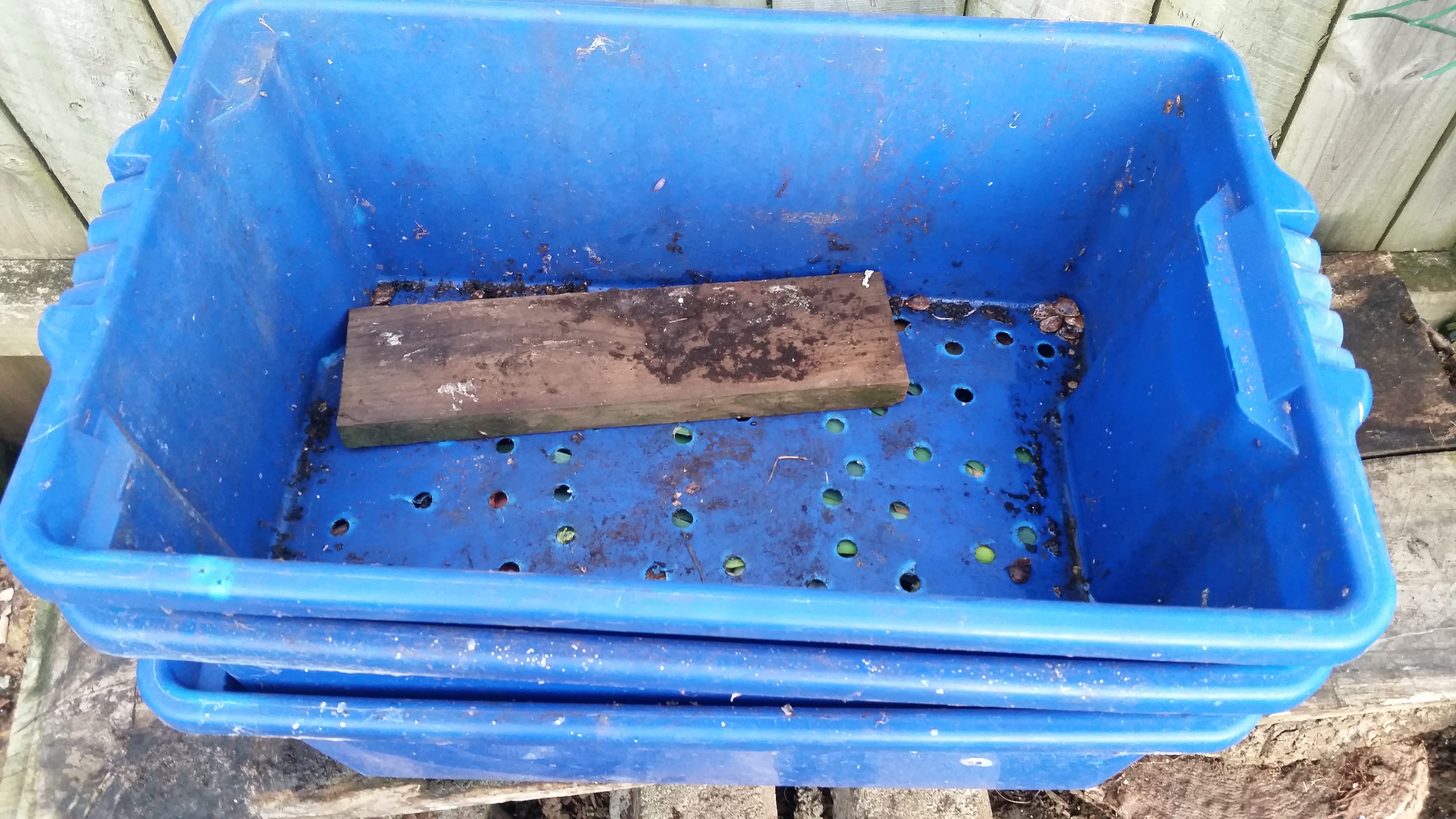
All manners of mold, ants, and cockroaches in there.
Should You be Selling Worms?
So should you be selling worms? Like most things; it really depends. They can be a great way to produce a bit of extra revenue if a little slow(but steady and scalable). The very nature of the passivity of raising these small critters will bring in a little extra income for very little effort. The amount you’ll be earning is all a matter of effort and scale. Small-scale is pretty easy to make a micro business from, but a larger scale will require effort and some capital outlay.
You can get started with as little as a cardboard box and some time/energy and be up and running, selling worms in a matter of weeks. While waiting for this, you could consider some other revenue sources such as Uber driving or freelancing. If you’re so inclined, I think your time would be better put towards starting an after-hours service business or working weekends, especially if you’re a tradesman. But you can do both side gigs and worms just the same, nothing wrong with income diversification.
Selling worms is one thing, but there are other ways you can use your land to produce income. Even without any substantial land, you can start with what you have. With just a small balcony, worms are a perfect little revenue machine to help add to your bottom line. Once you’re up and running, you could be pulling in $100+ per week from even a small set up. You can be making savings in other ways too, and use this money to build your worm farm too. LED Lights are a great place to start, as are chickens.
What do you think? Time to get into the worm game and start raising some wrigglers? Do you already have some micro-livestock on the go and pulling in some organic green? Let me know if the comments below or scroll down and join our Discord to meet like minded people.
Thanks for reading.
Yours,
Ben Black






